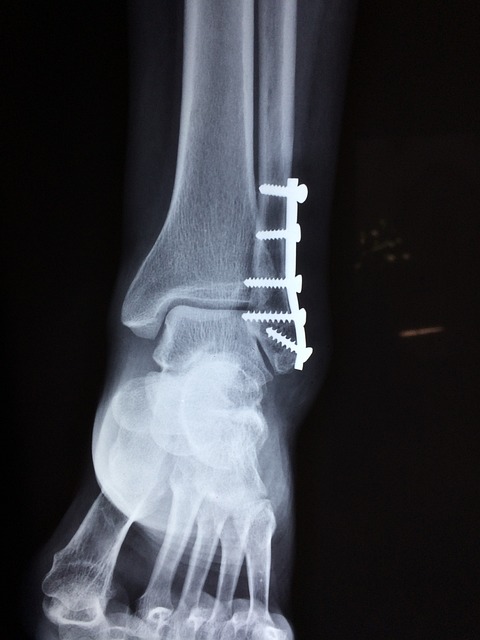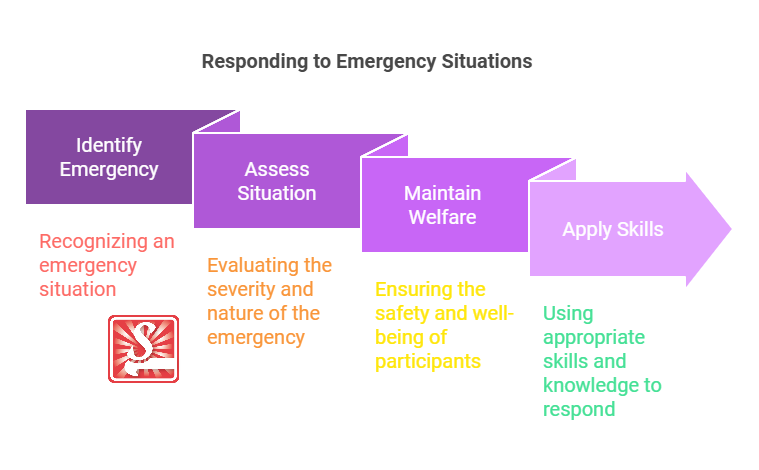Concise Instructions for Responding to Emergency Situations
Posted by SkillMaker in Dec, 2024
What is a concise description of responding to emergency situations in sport and recreation?

Responding to emergency situations in sport and recreation involves swiftly identifying, assessing, and acting upon unforeseen incidents to ensure the safety and wellbeing of individuals. This includes implementing emergency action plans, providing immediate assistance, and coordinating with emergency services as necessary to mitigate risks and contain the situation.
Why do people in sport and recreation enterprises need to know about responding to emergency situations?
Professionals in sport and recreation enterprises must be adept at responding to emergency situations to prevent injuries, save lives, and maintain a safe environment for participants and spectators. This knowledge minimizes potential liabilities, ensures compliance with safety regulations, and enhances the overall reputation of the facility or event.
“Being prepared to tackle emergency situations is essential for preserving safety and wellbeing within the sports and recreation industry.”
What are the key components or elements when responding to emergency situations in sport and recreation?
Key components of responding to emergency situations include:
- Emergency Action Plan (EAP): Predefined procedures to follow in various emergencies.
- Risk Assessment: Evaluating potential hazards and their impact.
- First Aid Provision: Offering immediate medical assistance.
- Communication: Effective dissemination of information during a crisis.
- Coordination with Emergency Services: Collaborating with police, fire, ambulance, and other agencies.
What key terms, with descriptions, relate to responding to emergency situations in sport and recreation?

Registered Trademark®
- CPR (Cardiopulmonary Resuscitation): A lifesaving technique useful in emergencies such as heart attacks or drowning.
- AED (Automated External Defibrillator): A portable device that diagnoses and treats cardiac arrest.
- Incident Commander: The person who coordinates the response and resources during an emergency.
- Evacuation Protocol: A set of guidelines to safely evacuate individuals from a dangerous environment.
- Personal Protective Equipment (PPE): Gear used to shield individuals from health and safety risks.
Who is typically engaged with operating or implementing emergency responses in sport and recreation?
Coaches, team leaders, facility managers, health and safety officers, and trained volunteers are typically responsible for implementing emergency responses in sport and recreation settings. Their roles involve ensuring readiness, conducting drills, and applying immediate measures during an incident.
How does responding to emergency situations align or integrate with other components of Sport and Recreation?

Responding to emergency situations aligns with risk management processes and health and safety protocols in the sport and recreation sector. It ensures that all activities are conducted within a framework that prioritizes the welfare of participants, while also linking to broader emergency management strategies and community resilience efforts.
Where can the student go to find out more information about responding to emergency situations in sport and recreation?
- Sport Australia – Safety and emergency planning resources
- First Aid Training by St John Ambulance
- Australian Red Cross – Emergency Services
What job roles would be knowledgeable about responding to emergency situations in sport and recreation?
Roles include:
- Facility Managers
- Health and Safety Officers
- Coaches and Team Leaders
- Event Coordinators
- First Responders
What is responding to emergency situations like in relation to sports, family, or schools?

In sports, responding to emergency situations is akin to a coach guiding the team through a crisis with skill and composure.
Within a family context, it resembles parents handling unexpected situations calmly and ensuring everyone’s safety.
In schools, it parallels educators implementing emergency drills smoothly, fostering a secure environment for learning and growth.
(The first edition of this post was generated by AI to provide affordable education and insights to a learner-hungry world. The author will edit, endorse, and update it with additional rich learning content.)


 Post Tagged with
Post Tagged with